Exploring the World of Wood-Burning Art
Have you ever stumbled upon a piece of wood art that made you stop and stare? The intricate designs, the warmth of the wood, and the story each piece tells can be truly captivating. Welcome to the fascinating realm of wood-burning art, a craft that has stood the test of time and continues to evolve in today's artistic landscape. This article will take you on a journey through the history, techniques, and tools of this unique art form, as well as provide tips for beginners and insights into its growing popularity.
Wood-burning, also known as pyrography, involves using a heated tool to create designs on wood surfaces. It’s not just about burning; it’s about creating depth, texture, and emotion through a simple piece of wood. Imagine transforming a plain wooden board into a stunning masterpiece that captures the essence of nature or tells a personal story. The beauty of wood-burning lies in its versatility; from simple doodles to complex scenes, the possibilities are endless.
As we delve deeper into this craft, you’ll learn about the essential tools and techniques that can help you embark on your own wood-burning journey. Whether you’re a curious beginner or an experienced artist looking to refine your skills, there’s something here for everyone. So grab your pyrography pen and let’s ignite that creative spark!
Wood-burning art has a rich history that dates back to ancient civilizations. The earliest forms of pyrography were practiced by the Chinese and Egyptians, who used heated tools to decorate wood and leather. As time progressed, different cultures adopted this technique, each adding their unique flair and significance to the art form. For instance, in Native American cultures, wood-burning was often used to create intricate designs on ceremonial objects, reflecting their deep connection to nature and spirituality.
Throughout the centuries, wood-burning evolved with the advancement of tools and techniques. The introduction of electric pyrography pens in the 20th century revolutionized the craft, making it more accessible to artists of all levels. Today, wood-burning art is celebrated not only for its aesthetic appeal but also for the emotional connection it fosters between the artist and the medium. The tactile nature of wood, combined with the transformative power of fire, creates a unique experience that resonates with both creators and viewers alike.
Before diving into the world of wood-burning, it’s crucial to equip yourself with the right tools. The essentials include:
- Pyrography Pen: This is your primary tool. There are various types, including fixed temperature and adjustable temperature pens.
- Wood Types: Different woods yield different results. Basswood and birch are popular choices for beginners due to their smooth surfaces.
- Safety Equipment: Always prioritize safety. Use heat-resistant gloves and a mask to protect against fumes.
With the right tools in hand, you’ll be ready to embark on your artistic journey. Remember, the quality of your materials can significantly impact the outcome of your artwork, so choose wisely!
When it comes to pyrography pens, the choice can be overwhelming. You’ll find two main types: fixed temperature and adjustable temperature pens. Fixed temperature pens are great for beginners, as they provide a consistent heat level, making it easier to achieve uniform results. On the other hand, adjustable temperature pens offer more versatility, allowing you to control the heat for different techniques, such as shading or fine line work.
Not all wood is created equal in the world of wood-burning. Different types of wood can produce varying effects in your artwork. For example:
| Wood Type | Characteristics | Best For |
|---|---|---|
| Basswood | Soft, smooth, and easy to burn | Beginners and detailed work |
| Birch | Light color with a fine grain | Detailed designs and portraits |
| Pine | More texture and knots | Rustic and natural designs |
Choosing the right wood can enhance your artwork and make your designs pop!
Safety should always come first in any art form, especially one involving heat. Here are some essential safety tips:
- Always work in a well-ventilated area to avoid inhaling fumes.
- Use heat-resistant gloves to protect your hands from burns.
- Keep a fire extinguisher nearby, just in case.
By following these precautions, you can ensure a safe and enjoyable wood-burning experience.
Now that you’re equipped and ready to go, let’s dive into some fundamental wood-burning techniques. Beginners should start with:
- Line Work: Creating outlines and shapes.
- Shading: Adding depth by varying the pressure and speed of your pen.
- Texturing: Experimenting with different strokes to create unique patterns.
These techniques will form the foundation of your wood-burning skills, allowing you to create stunning pieces that showcase your creativity.
Once you’ve mastered the basics, it’s time to explore advanced techniques. This is where the fun really begins! Consider experimenting with:
- Layering: Building depth by applying multiple layers of burn.
- Color Application: Incorporating stains or paints to enhance your artwork.
- Mixed Media: Combining wood-burning with other art forms, like painting or collage.
These advanced methods will not only elevate your skills but also allow you to express your artistic vision in new and exciting ways.
Adding color to your wood-burning projects can take them to the next level. You can use various methods, such as:
- Stains: These can enhance the natural grain of the wood.
- Paints: Acrylic or watercolor paints can add vibrancy.
- Dyes: These penetrate the wood for a more integrated look.
Experimenting with color can transform your artwork, making it more dynamic and visually appealing.
Wood-burning isn’t just a standalone craft; it can be beautifully combined with other art forms. Consider incorporating elements like:
- Paint to add depth and color.
- Collage materials for texture and interest.
- Fabric or other mixed media to create unique pieces.
The fusion of wood-burning with other mediums opens up a world of creative possibilities, allowing you to express your artistic voice in innovative ways.
As you embark on your wood-burning journey, finding inspiration and connecting with others can be incredibly beneficial. Explore online communities, join workshops, and follow artists on social media platforms. These connections can provide valuable feedback, tips, and encouragement, helping you grow as an artist.
In conclusion, wood-burning art is a captivating craft that combines creativity, skill, and a deep connection to nature. Whether you’re just starting or looking to refine your techniques, there’s always something new to discover in this beautiful art form. So, gather your tools, unleash your creativity, and let the world of wood-burning art inspire you!
Q: What type of wood is best for beginners?
A: Basswood is often recommended for beginners due to its smooth surface and ease of burning.
Q: Can I use a regular soldering iron for wood-burning?
A: While it's possible, a dedicated pyrography pen offers better control and versatility for detailed work.
Q: How do I keep my workspace safe while wood-burning?
A: Ensure you work in a well-ventilated area, use heat-resistant gloves, and have a fire extinguisher nearby.
Q: Is it possible to add color to my wood-burning projects?
A: Absolutely! You can use stains, paints, or dyes to enhance your artwork.
Q: Where can I find inspiration for my wood-burning art?
A: Online communities, social media platforms, and local workshops are great places to find inspiration and connect with fellow artists.

The History of Wood-Burning Art
This article delves into the fascinating craft of wood-burning art, exploring its history, techniques, tools, and tips for beginners, as well as its growing popularity in contemporary art.
Wood-burning art, also known as pyrography, has a rich and vibrant history that spans across cultures and centuries. Its origins can be traced back to ancient civilizations, where the practice was not only a form of artistic expression but also served practical purposes. For instance, in ancient Egypt, artisans used heated tools to decorate wooden surfaces, creating intricate designs that told stories and depicted their beliefs.
As we journey through time, we see that wood-burning techniques evolved significantly. During the Middle Ages, it became popular in Europe as a method to create religious artifacts and ornate furniture. The art form was often associated with craftsmanship and was a means for artisans to showcase their skills. It wasn't until the 19th century that pyrography began to gain popularity as a hobby, especially in Victorian England, where it was embraced by the middle class as a means of home decoration.
The 20th century marked a turning point for wood-burning art, as it transitioned from a craft primarily practiced by artisans to a popular pastime among hobbyists. The invention of electric pyrography pens in the early 1900s revolutionized the craft, making it more accessible and easier to use. This technological advancement allowed artists to achieve finer details and greater precision in their work, igniting a wave of creativity and experimentation.
Today, wood-burning art has experienced a resurgence in popularity, largely due to the rise of DIY culture and social media platforms that celebrate creativity. Artists are now able to reach wider audiences and share their techniques through online tutorials, workshops, and community forums. This has fostered a global community of wood-burning enthusiasts who inspire each other and push the boundaries of this traditional art form.
In summary, the history of wood-burning art is a testament to human creativity and adaptability. From its ancient roots to its modern-day resurgence, pyrography continues to evolve, captivating artists and audiences alike. As you embark on your own wood-burning journey, remember that you are part of a long lineage of creators who have used this unique medium to express their thoughts, emotions, and stories.
Learn about the essential tools needed for wood-burning, including different types of pyrography pens, wood types, and safety equipment, ensuring you have everything required to start your artistic journey.
Explore the various types of pyrography pens available, including fixed temperature and adjustable temperature options, helping you choose the best one for your artistic style and projects.
Different woods produce varying effects in wood-burning art. This section discusses the best wood types to use, their characteristics, and how they influence the final artwork.
Safety is crucial in wood-burning. This part covers essential safety tips and precautions to take while working with hot tools and materials to ensure a safe creative environment.
This section introduces fundamental wood-burning techniques, including shading, line work, and texturing, providing beginners with the skills needed to create stunning wood-burned pieces.
For those looking to elevate their skills, this section explores advanced techniques such as layering, color application, and mixed media, encouraging artists to experiment and expand their creative horizons.
Learn how to add color to your wood-burning projects, discussing different methods such as stains, paints, and dyes, and how they can enhance the overall aesthetic of your artwork.
Explore the possibilities of combining wood-burning with other art forms, such as painting and collage, to create unique and innovative mixed media pieces that stand out.
Discover resources for finding inspiration in wood-burning art, including online communities, workshops, and social media platforms, fostering connections with fellow artists and expanding your creative network.
Q1: What is wood-burning art?
Wood-burning art, or pyrography, is the practice of decorating wood with burn marks using a heated tool.
Q2: Do I need special wood for wood-burning?
While many types of wood can be used, softer woods like pine or birch are recommended for beginners due to their ease of burning.
Q3: Is wood-burning safe?
Yes, as long as proper safety precautions are taken, such as using protective gear and ensuring proper ventilation.
Q4: Can I use color in wood-burning art?
Absolutely! You can incorporate colors using stains, paints, or dyes to enhance your artwork.
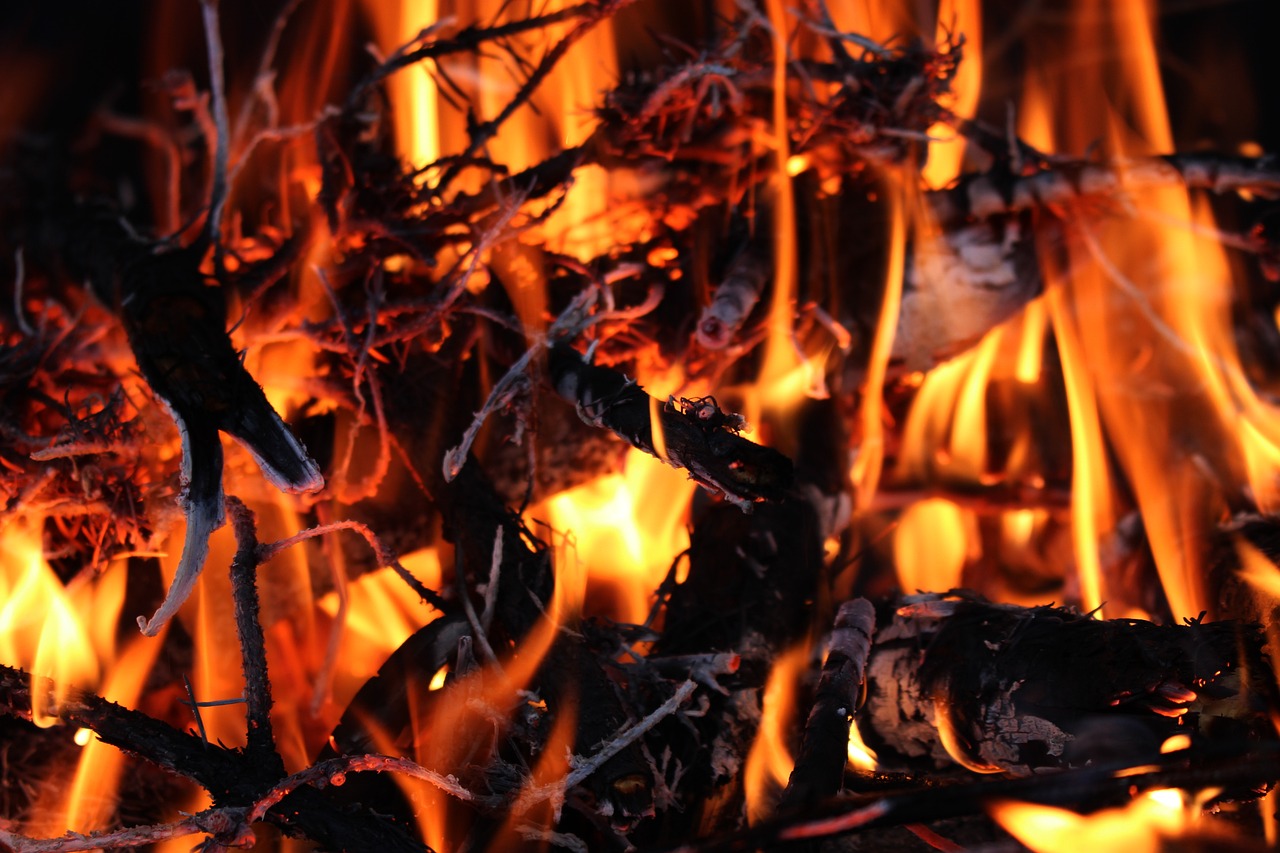
Essential Tools for Wood-Burning
When diving into the captivating world of wood-burning art, having the right tools is absolutely essential. Think of it like a painter needing brushes and canvases; your tools will define your artistic journey. At the heart of this craft is the pyrography pen, which is your primary instrument for creating intricate designs on wood. These pens come in various types, each offering unique features to suit different artistic styles. For instance, you can choose between fixed temperature pens, which are simpler to use, and adjustable temperature pens, which provide greater control over the heat and, consequently, the depth and texture of your burn.
To help you navigate this world, let’s break down the essential tools you’ll need:
| Tool | Description |
|---|---|
| Pyrography Pen | The main tool for burning designs into wood. Choose between fixed and adjustable temperature options. |
| Wood Types | Selecting the right wood is crucial; softer woods like pine are easier to burn, while hardwoods like oak offer more intricate details. |
| Safety Equipment | Protective gear such as gloves and goggles to ensure safety while working with hot tools. |
Additionally, you’ll want to consider the type of wood you’re working with. Different woods can yield varying results, affecting the final appearance of your artwork. For example, basswood is a favorite among beginners due to its smooth surface and light color, which makes it easy to see the burn marks. On the other hand, birch and maple can provide a more vibrant contrast, allowing for more depth in your designs.
Safety should never be overlooked in your creative process. Always have safety equipment on hand, including gloves to protect your hands from burns and goggles to shield your eyes from any flying debris. Remember, a safe artist is a happy artist! As you embark on this exciting journey, having the right tools not only enhances your experience but also ensures that you can express your creativity without limitations.
In summary, investing in quality tools is the first step to mastering wood-burning art. With your pyrography pen in hand, the right wood selected, and safety measures in place, you’re ready to unleash your creativity and explore the endless possibilities that await in this beautiful craft.
1. What is the best wood for beginners?
Basswood is highly recommended for beginners due to its softness and ease of burning.
2. Do I need special safety equipment?
Yes, protective gloves and goggles are important to ensure your safety while working with hot tools.
3. Can I use a regular soldering iron for wood-burning?
While it’s possible, a dedicated pyrography pen offers better temperature control and is designed specifically for wood-burning art.
4. How do I clean my pyrography pen?
After use, let it cool down and wipe the tip with a damp cloth to remove any residue.

Choosing the Right Pyrography Pen
When it comes to wood-burning art, selecting the right pyrography pen can make all the difference in your creative journey. With so many options available, it can feel overwhelming, but don’t fret! Understanding the types of pyrography pens and their features will help you find the perfect fit for your artistic style. Generally, there are two main types of pyrography pens: fixed temperature pens and adjustable temperature pens.
Fixed temperature pens are typically more straightforward, making them ideal for beginners. These pens operate at a constant temperature, which means you won’t have to worry about adjusting settings while you work. However, this can limit your ability to create detailed shading and textures, as different wood types require different heat levels to achieve optimal results. On the other hand, adjustable temperature pens offer greater versatility. They allow you to control the heat level, giving you the freedom to experiment with various techniques and styles. If you’re serious about diving deep into wood-burning art, investing in an adjustable pen is a wise choice.
Another important aspect to consider is the tip variety. Pyrography pens come with interchangeable tips that serve different purposes, such as fine lines, shading, or texturing. A basic set typically includes:
- Fine Point Tip: Great for detailed line work and intricate designs.
- Chisel Tip: Perfect for shading and filling larger areas.
- Ball Tip: Ideal for creating dots and stippling effects.
Choosing the right tip can enhance your wood-burning experience significantly. It’s like having a toolbox filled with various brushes for painting; each one serves a unique purpose and can lead to different creative outcomes.
Additionally, consider the comfort and grip of the pen. You’ll be holding this tool for extended periods, so it’s essential to choose one that feels comfortable in your hand. Look for ergonomic designs that reduce strain and allow for better control. Some pens even come with heat-resistant grips, which can be a game-changer when working on larger projects.
Lastly, don’t forget about the power source. Most pyrography pens are either corded or cordless. Corded models provide a constant power supply, ensuring you won’t run out of battery mid-project. However, cordless pens offer the convenience of mobility, allowing you to work anywhere without being tethered to an outlet. It ultimately comes down to your personal preference and working style.
In summary, when choosing the right pyrography pen, consider the following factors:
- Type: Fixed vs. Adjustable Temperature
- Tip Variety: Different tips for various techniques
- Comfort: Ergonomic design for extended use
- Power Source: Corded vs. Cordless
By taking the time to evaluate these aspects, you'll be well on your way to selecting a pyrography pen that not only meets your needs but also enhances your creative expression. So, gear up and get ready to bring your wood-burning art to life!
Q1: What is the best wood for beginners to use in wood-burning?
A1: Basswood and birch are excellent choices for beginners due to their smooth surfaces and light colors, which allow for clear visibility of your designs.
Q2: Can I use my pyrography pen on other materials besides wood?
A2: Yes! While wood is the most common medium, you can also use pyrography pens on materials like leather, cork, and some types of paper.
Q3: How do I clean my pyrography pen?
A3: It's essential to clean your pen regularly. Use a soft cloth or brush to remove any residue while the pen is cool. For stubborn spots, you can use a bit of rubbing alcohol on a cloth.
Q4: Is wood-burning safe?
A4: Yes, wood-burning can be safe if proper precautions are taken, such as using the pen in a well-ventilated area and wearing heat-resistant gloves.
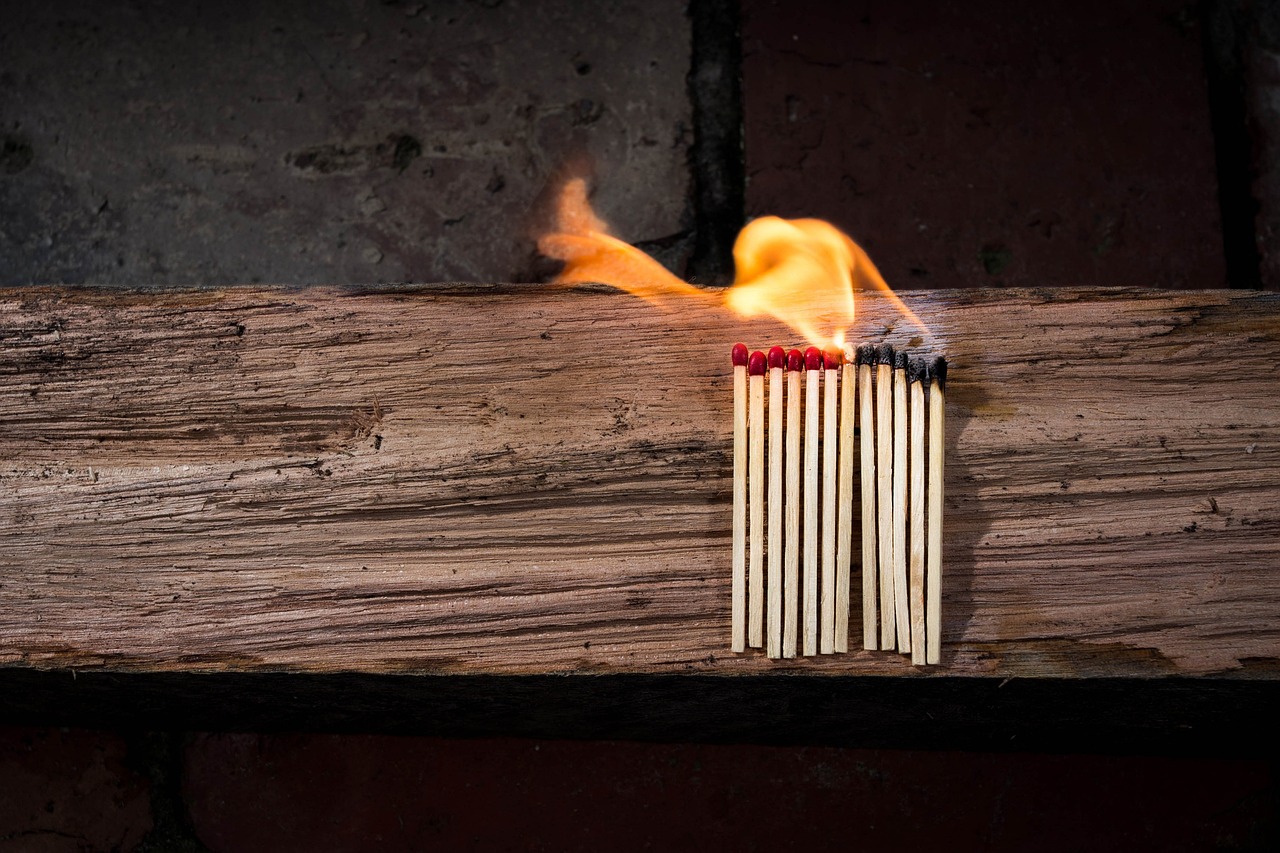
Understanding Wood Types
When it comes to wood-burning art, the type of wood you choose can significantly influence the outcome of your masterpiece. Different woods have unique characteristics that affect how they burn, the depth of the lines, and the overall appearance of the finished piece. It’s almost like selecting the perfect canvas for a painting; the right choice can make all the difference in your creative expression.
Let’s break down some of the most popular wood types used in pyrography:
| Wood Type | Characteristics | Best For |
|---|---|---|
| Birch | Light in color, smooth texture, burns evenly. | Beginners, detailed designs. |
| Pine | Softwood, easy to work with, has visible grain. | Texturing, rustic art. |
| Maple | Hardwood, fine grain, takes detail well. | Intricate designs, professional pieces. |
| Walnut | Dark color, rich grain, burns beautifully. | High-end projects, contrast work. |
Each wood type presents its own set of challenges and rewards. For instance, birch is often favored by beginners due to its light color and smooth texture, which allows for clean, even burns. In contrast, walnut is a favorite among seasoned artists because of its rich, dark tones that create stunning contrasts in wood-burning art.
Moreover, the grain of the wood plays a crucial role. Woods with a pronounced grain pattern, like pine, can add an extra layer of texture to your artwork. This can enhance the visual appeal but may require you to adjust your technique to accommodate the natural features of the wood. On the other hand, maple offers a fine grain that allows for intricate details, making it perfect for more complex designs.
It's also essential to consider how the wood reacts to heat. Softer woods tend to burn faster and require less temperature to achieve the desired effect, while harder woods may need more time and higher temperatures to create similar results. This is why understanding the properties of different woods is vital for achieving your artistic vision.
In summary, the type of wood you choose is a fundamental aspect of wood-burning art that can dramatically affect your creative process and final results. Experimenting with various woods will not only help you discover your personal preferences but also enhance your skills as an artist. So, don’t hesitate to try out different types and see how they inspire your next wood-burning project!
- What is the best wood for beginners? Birch is often recommended for beginners due to its smooth texture and ease of use.
- Can I use plywood for wood-burning? Yes, plywood can be used, but it may burn differently than solid wood. It's essential to test a small area first.
- How do I prepare wood for burning? Sand the surface to remove any rough spots and dust, which will help achieve cleaner lines and shading.
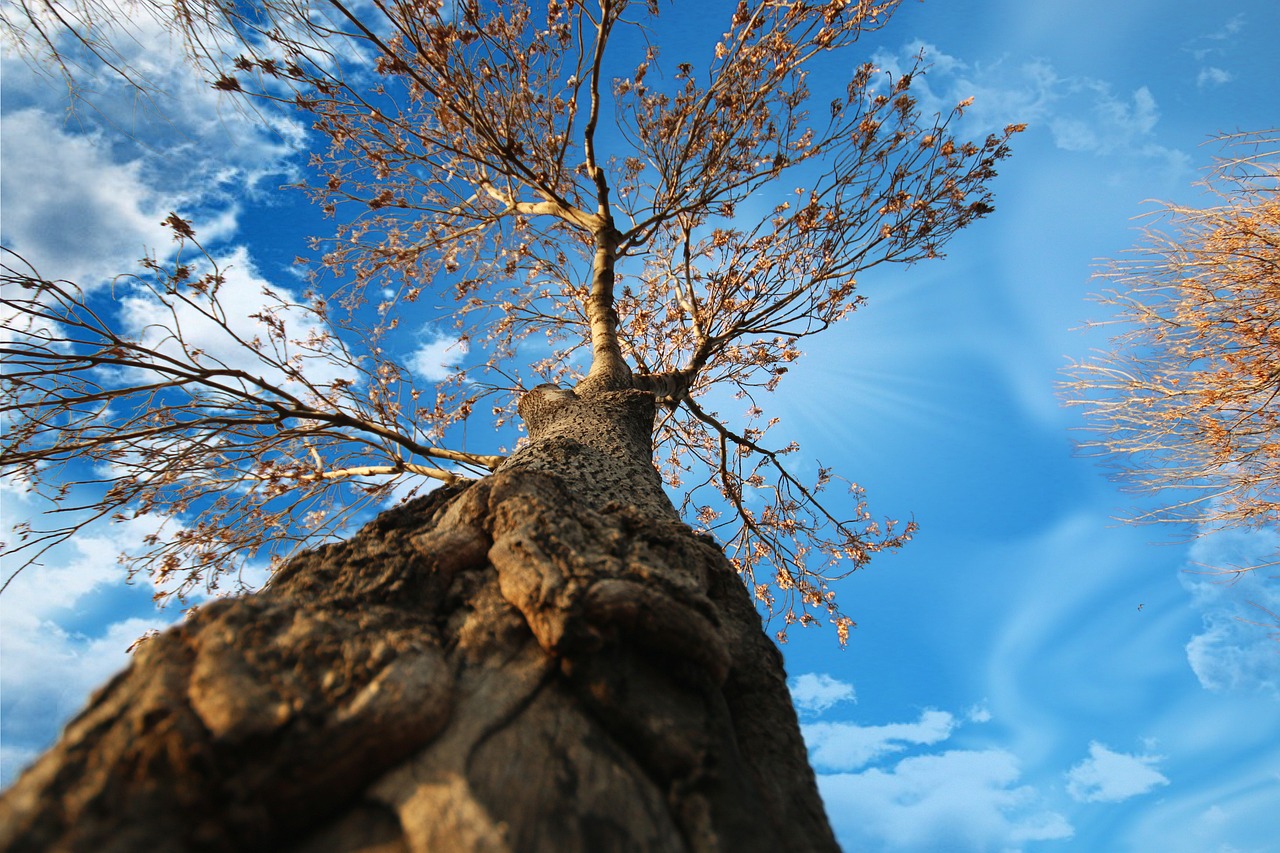
Safety Precautions
When diving into the captivating world of wood-burning art, safety should always be your top priority. After all, while creating stunning pieces, you’re working with tools that can reach extremely high temperatures. To ensure a safe and enjoyable experience, here are some essential precautions you should take. First and foremost, always work in a well-ventilated area. The fumes from burning wood can be harmful, so having good airflow is crucial. If you're indoors, consider using a fan or working near an open window to keep the air fresh.
Next, protective gear is your best friend. Invest in a pair of heat-resistant gloves to shield your hands from accidental burns. Additionally, wearing safety goggles can protect your eyes from any stray wood particles that might fly around during your creative process. It’s a small price to pay for peace of mind while you’re lost in your artistic flow!
Another vital aspect is to keep your workspace organized. A cluttered area can lead to accidents, especially when you're handling hot tools. Make sure to have a designated spot for your pyrography pen, wood pieces, and any other materials you might be using. This way, you’ll always know where everything is, reducing the risk of mishaps.
Also, remember to unplug your pyrography pen when not in use. It might seem like a hassle, but this simple step can prevent accidental burns or fires. Always allow your tools to cool down completely before storing them away. This not only prolongs the life of your equipment but also ensures that you won’t accidentally touch a hot surface later.
Lastly, be mindful of the materials you’re using. Not all woods are created equal; some can release harmful fumes when burned. Always opt for untreated, natural wood for your projects. If you’re unsure about a specific type of wood, do a little research or consult with fellow artists before diving in.
In summary, by following these safety precautions, you can focus on unleashing your creativity without the worry of accidents. Remember, a safe artist is a happy artist!
- What should I do if I accidentally burn myself? If you suffer a burn, immediately cool the area with running water for at least 10 minutes. If the burn is severe, seek medical attention.
- Can I use treated wood for wood-burning projects? It’s best to avoid treated wood as it can release toxic fumes when burned. Stick to untreated, natural wood for safety.
- How can I ensure my workspace is safe? Keep your workspace tidy, use protective gear, and ensure good ventilation to minimize risks while working.
- What type of gloves should I use for wood-burning? Look for heat-resistant gloves that can protect your hands from burns while allowing you to maintain dexterity.
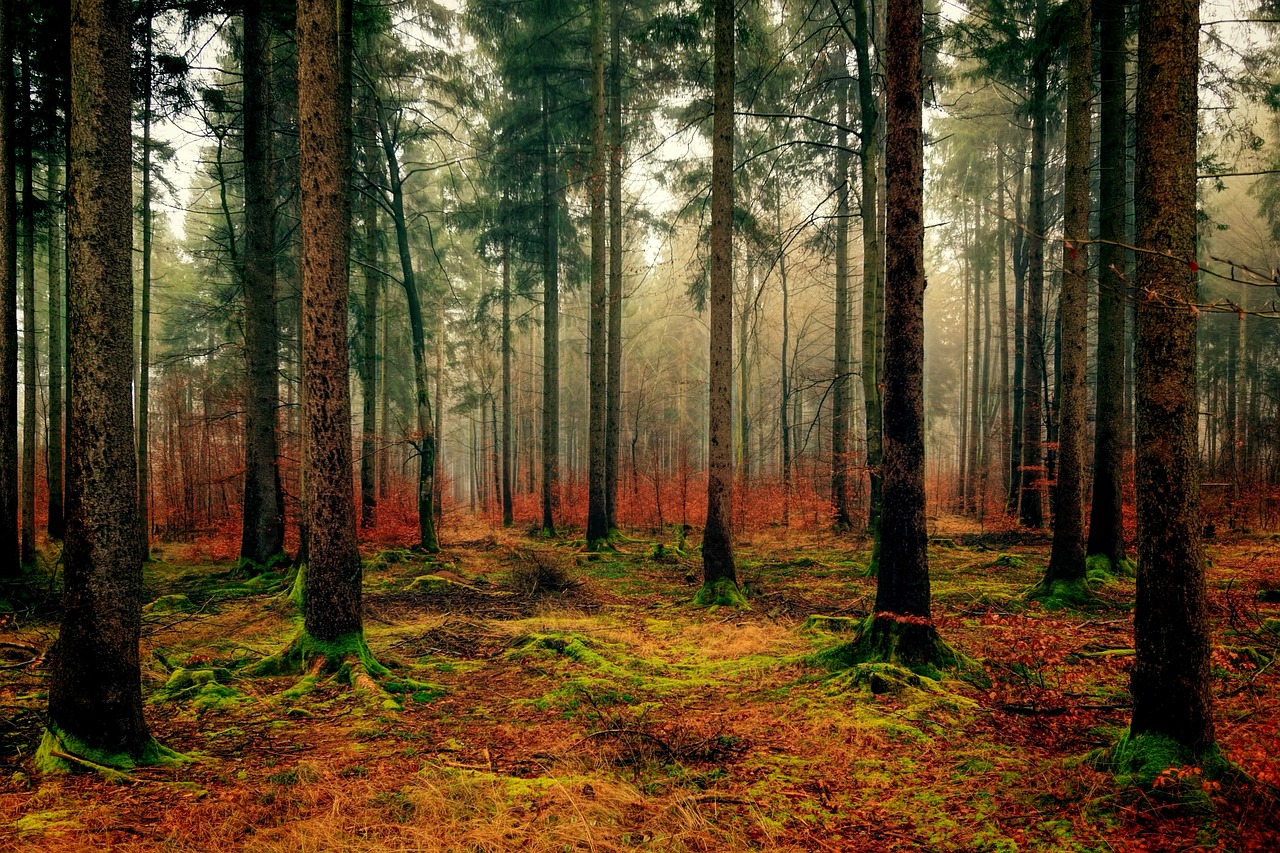
Basic Techniques for Beginners
Wood-burning, or pyrography, is an enchanting art form that allows you to transform simple pieces of wood into stunning masterpieces. For beginners, mastering the basic techniques is essential to unlock the full potential of this craft. So, where do you start? Let's break down some fundamental techniques that every aspiring wood-burner should know.
First and foremost, shading is a crucial technique that adds depth and dimension to your artwork. By varying the pressure and speed of your pyrography pen, you can create different shades and tones. Imagine shading as the way you blend colors in painting; it’s all about creating gradients that make your piece come alive. A common method for beginners is to practice cross-hatching, where you draw parallel lines in one direction and then add another set of lines in a perpendicular direction, creating a textured effect.
Next up is line work. This technique focuses on creating clear, defined lines that can outline shapes or add intricate details to your piece. Think of it as the skeleton of your artwork; without it, the piece may feel incomplete. Start with simple shapes and gradually move on to more complex designs. Remember, practice makes perfect! Using a steady hand and a consistent speed will help you achieve clean, sharp lines.
Another essential technique is texturing. This technique allows you to add unique patterns and effects to your wood-burned pieces, giving them a tactile quality. You can achieve texture by varying your pen’s angle and pressure or by using different tips on your pyrography pen. For instance, using a spoon shader tip can create soft, rounded textures, while a pointed tip can produce fine details. Experimenting with various techniques will help you discover your unique style.
To help you visualize these techniques, here’s a quick comparison of the three basic methods:
| Technique | Description | Tip for Beginners |
|---|---|---|
| Shading | Creating gradients and depth by varying pressure and speed. | Practice cross-hatching for effective shading. |
| Line Work | Using defined lines to outline shapes and add details. | Focus on steady hands for clean lines. |
| Texturing | Adding unique patterns to enhance the artwork's tactile quality. | Experiment with different pen tips for varied textures. |
As you dive into these techniques, remember that patience and practice are your best friends. Don't be discouraged if your first few attempts don’t turn out as expected; every artist has been there! Embrace the learning process and allow yourself to make mistakes. Each piece you create is a step toward mastering the craft.
Finally, consider joining a community of wood-burning enthusiasts. Sharing your work and receiving feedback can be incredibly motivating and inspiring. Plus, you’ll learn from others and discover new techniques to try. So grab your pyrography pen, choose a piece of wood, and let your creativity flow!
- What type of wood is best for beginners? Softwoods like pine or basswood are great for beginners due to their ease of burning.
- Can I use regular pens for wood-burning? No, you need a specific pyrography pen designed for wood-burning to achieve the best results.
- How do I clean my wood-burning tools? Ensure your tools are cool, then wipe them with a soft cloth. For stubborn residue, use a fine sandpaper.
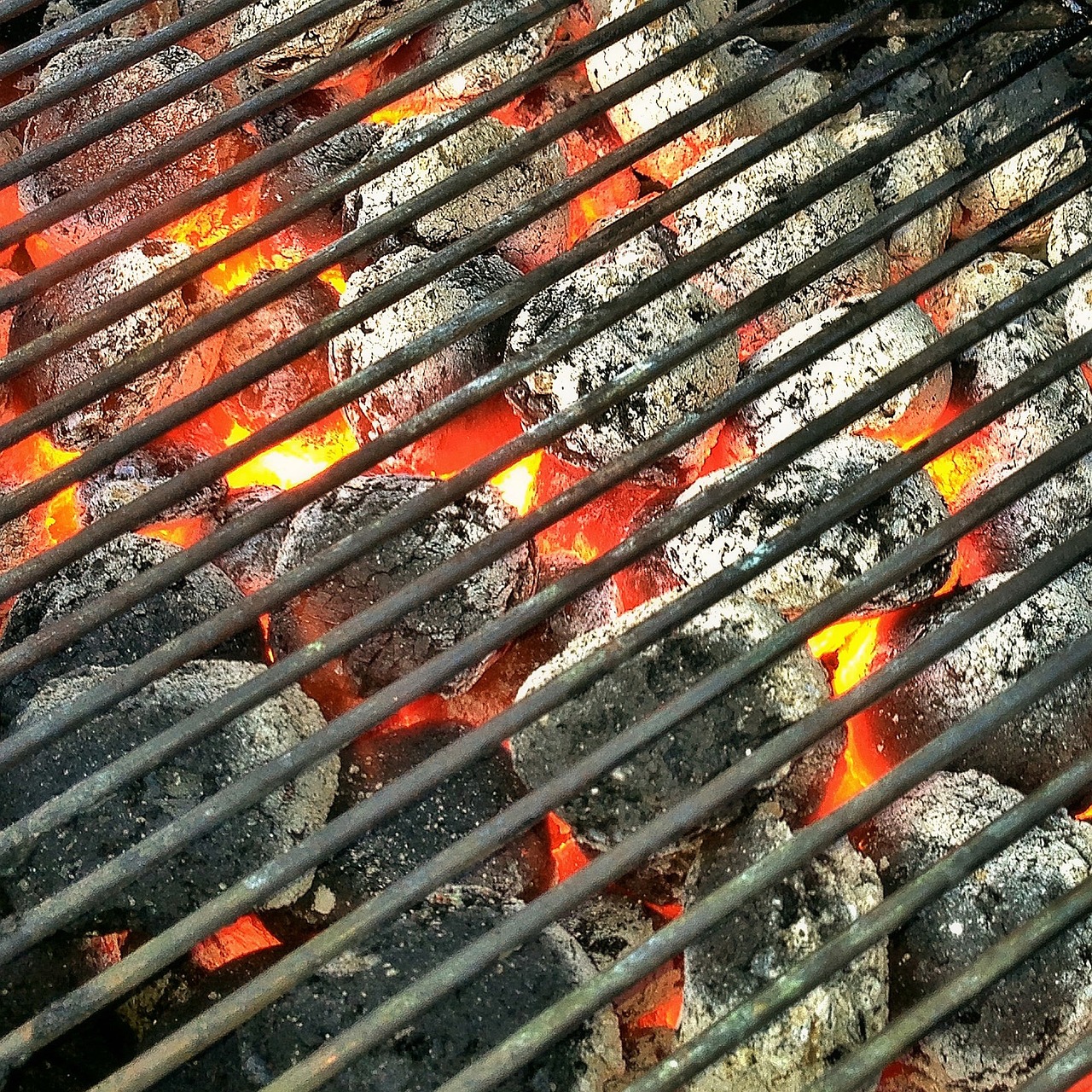
Advanced Wood-Burning Techniques
Once you've mastered the basics of wood-burning, it's time to take your skills to the next level with advanced techniques. These methods not only enhance your artistic expression but also allow you to create intricate and stunning pieces that can truly captivate an audience. Think of it as adding spices to a dish; while the basic ingredients are essential, it’s those additional flavors that make it memorable!
One of the most exciting aspects of advanced wood-burning is the concept of layering. This technique involves applying multiple layers of burn to achieve depth and dimension in your artwork. By varying the pressure and speed of your pyrography pen, you can create shadows and highlights that give your piece a three-dimensional look. Imagine painting a landscape where the mountains recede into the distance, or a portrait that captures the subtleties of light on a face—layering can help you achieve such effects in wood-burning.
Another technique worth exploring is color application. While wood-burning is traditionally a monochromatic art form, introducing color can dramatically alter the visual impact of your work. You can use various methods to add color, such as applying stains, paints, or dyes after the wood has been burned. Each method has its own unique characteristics; for example, stains can enhance the natural grain of the wood, while paints can provide vibrant, opaque colors. It's a bit like choosing between a soft watercolor and a bold acrylic in painting—each option offers a different aesthetic.
Incorporating mixed media into your wood-burning projects opens up a realm of creative possibilities. Imagine combining your wood-burned art with painting or collage. This fusion allows you to explore textures and forms that stand out and make a statement. You might burn a detailed scene into a wooden panel and then add layers of painted elements or even fabric to create a tactile experience for the viewer. The beauty of mixed media is that it encourages experimentation—don’t be afraid to try out different combinations!
Here’s a quick overview of some advanced techniques you might want to explore:
| Technique | Description |
|---|---|
| Layering | Applying multiple burn layers for depth and dimension. |
| Color Application | Using stains, paints, or dyes to add color to wood-burned pieces. |
| Mixed Media | Combining wood-burning with other art forms like painting or collage. |
As you dive into these advanced techniques, remember that practice is key. Don’t hesitate to experiment! Each piece you create is a step toward refining your unique style. Perhaps you’ll discover a method that resonates with you, or maybe you’ll blend several techniques to craft something entirely new. The world of wood-burning art is vast and full of potential, so embrace the journey of exploration.
In conclusion, advanced wood-burning techniques can transform your artwork from simple designs to complex, layered masterpieces. By layering, adding color, and experimenting with mixed media, you’ll not only enhance your skills but also develop a distinctive voice in your art. So, grab your pyrography pen, and let your creativity flow!
- What is the best wood for advanced wood-burning techniques?
While many types of wood can be used, basswood and birch are popular choices due to their fine grain and light color, which allows for better visibility of the burn. - Can I use regular paint on wood-burned art?
Yes, but it’s recommended to use acrylic paints as they adhere well to wood and can enhance the overall look of your artwork. - How can I ensure safety while using advanced techniques?
Always wear safety goggles and work in a well-ventilated area. Additionally, keep a fire extinguisher nearby and take breaks to prevent fatigue.
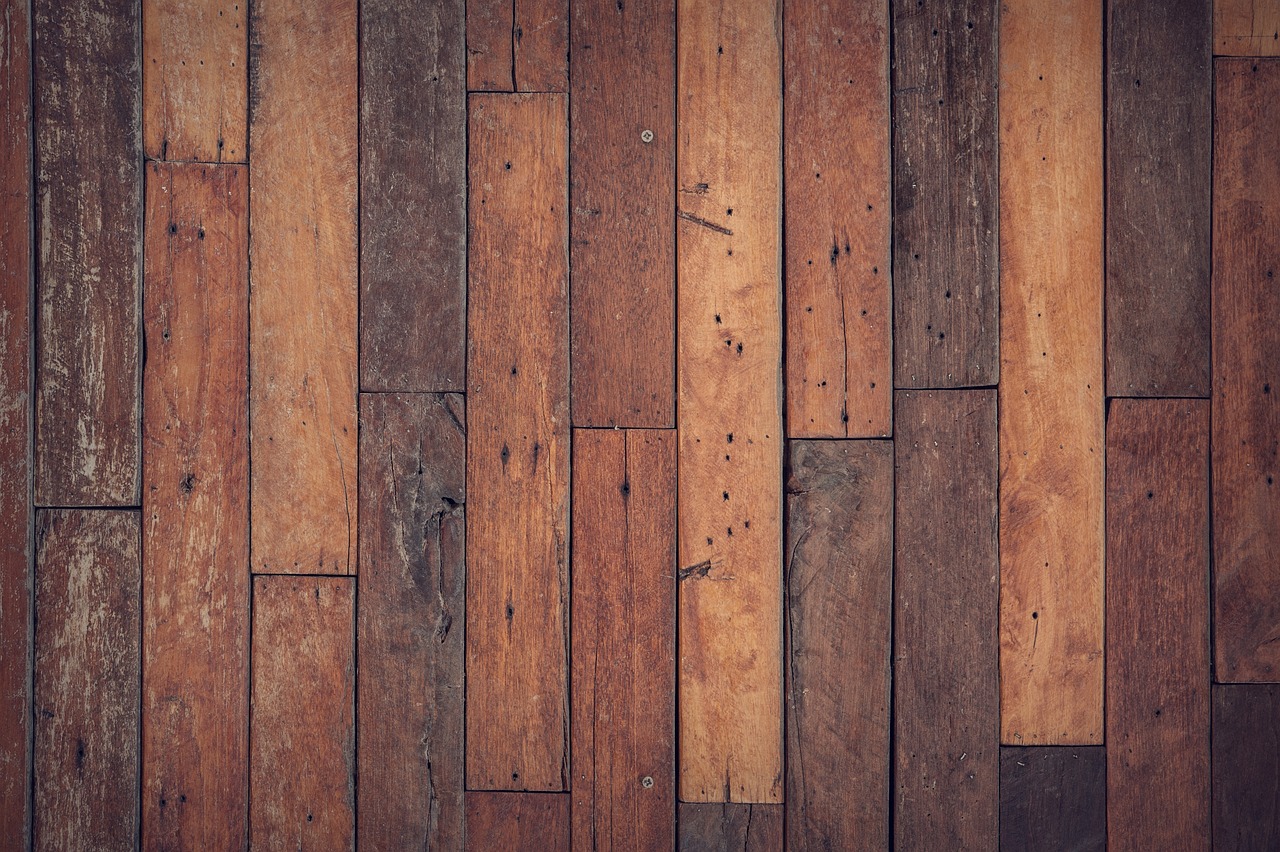
Incorporating Color into Wood-Burning
When it comes to wood-burning art, the beauty of the craft often lies in its natural tones and textures. However, adding color can elevate your pieces to a whole new level, transforming simple designs into vibrant masterpieces. Imagine the depth and emotion that a splash of color can bring to a beautifully burned image of a sunset or a wildlife scene. The key is knowing how to incorporate color effectively without overwhelming the intricate details of your wood-burning work.
There are several methods to introduce color into your wood-burning projects, and each has its own unique effects. One of the most popular methods is using wood stains. These stains can penetrate the wood, enhancing the grain while adding a rich hue. When applying stains, it's essential to choose colors that complement your burned lines and shading. For instance, a deep mahogany stain can add warmth to a piece that features intricate line work. Just remember to let the stain dry completely before you start burning again, as moisture can interfere with the pyrography process.
Another fantastic option for adding color is using paints. Acrylic paints are a favorite among wood-burning artists due to their versatility and quick drying time. You can apply them with brushes or even sponges for different effects. If you want a more subtle touch, consider using a dry brush technique, where you lightly brush the paint over the surface to highlight the burned areas without completely covering them. This method works wonders for creating soft gradients or for adding highlights to specific sections of your artwork.
For those who want to experiment further, dyes can also be used in wood-burning art. Unlike stains and paints, dyes penetrate the wood fibers, offering a more translucent finish. This can be particularly effective for achieving a watercolor effect. You can apply dyes with a brush or even use a spray bottle for a more controlled application. Just be cautious, as dyes can sometimes bleed into the burned lines if not applied carefully.
To help you visualize the various methods of incorporating color into your wood-burning art, here's a quick comparison:
| Method | Effect | Best For |
|---|---|---|
| Wood Stains | Enhances grain, rich hues | Adding depth to burned designs |
| Acrylic Paints | Vibrant, opaque colors | Highlighting details and creating gradients |
| Dyes | Translucent, watercolor effect | Softening edges and blending colors |
Finally, don't forget about finishing techniques. Once you've added color to your piece, sealing it with a clear finish will protect your artwork and enhance its vibrancy. Choose a finish that suits your style; matte finishes can give a rustic look, while glossy finishes can make colors pop dramatically.
Incorporating color into wood-burning art is not just about slapping on some paint; it’s about creating a harmonious blend that complements your design. So, experiment, have fun, and watch your creations come to life in a riot of colors!
- Can I use any type of wood for color application? While most woods can be used, softer woods like pine or birch tend to absorb stains and dyes better than harder woods.
- How do I choose the right color for my artwork? Consider the mood you want to convey; warm colors evoke feelings of warmth and comfort, while cool colors can create a calm and serene atmosphere.
- Is it safe to use paints and stains with wood-burning? Yes, as long as you use non-toxic materials and ensure proper ventilation when applying them.
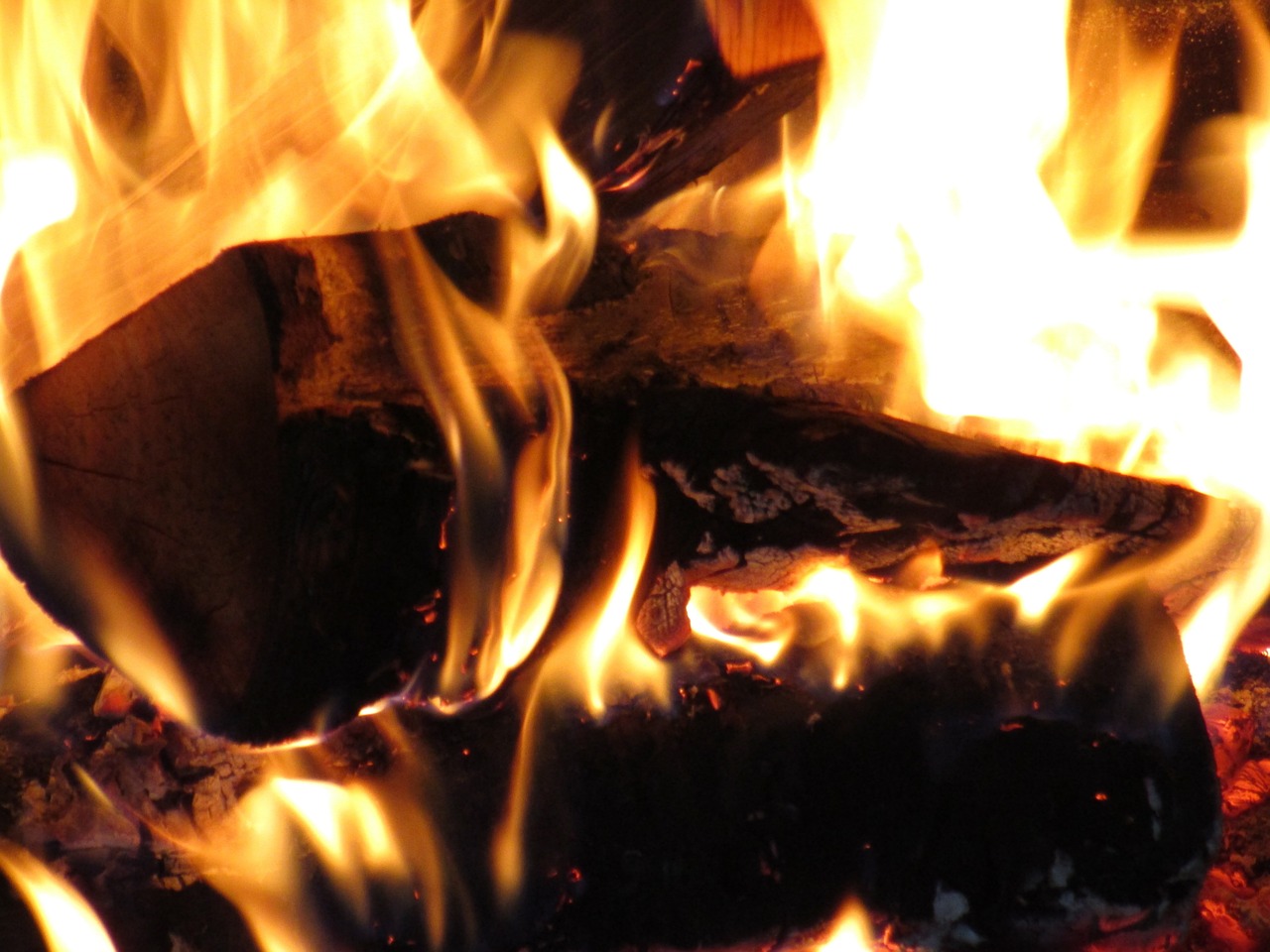
Creating Mixed Media Art
Mixed media art is a thrilling way to elevate your wood-burning projects by integrating various artistic elements and techniques. Imagine combining the warmth of wood with the vibrancy of paint, or the texture of fabric, creating a visual feast that captures attention and ignites conversation. This approach not only enhances the aesthetic appeal of your artwork but also allows for greater expression and creativity.
One of the most exciting aspects of mixed media art is the freedom it offers. You can experiment with different materials, such as acrylics, watercolors, or even textiles, to complement your wood-burned designs. For instance, you might start with a beautifully burned image of a tree and then add splashes of green and brown paint to create a more dynamic scene. This interplay of textures and colors can transform a simple wood piece into a stunning masterpiece.
When venturing into mixed media, it's essential to consider a few key factors:
- Material Compatibility: Make sure the materials you choose work well together. Some paints may not adhere to wood or could react negatively with the wood-burning process.
- Layering Techniques: Start with your wood-burning as the base layer. Once that’s complete, you can build up other materials on top, ensuring that each layer complements the others.
- Adhesives and Finishes: Use appropriate adhesives for different materials. For example, a strong craft glue might work for fabric, while a sealant could protect your paint.
Moreover, incorporating mixed media into your wood-burning projects opens up endless possibilities for artistic expression. You might explore themes such as nature, abstract concepts, or even personal narratives through your choice of materials. For example, adding pieces of old maps or photographs can give your artwork a storytelling element, inviting viewers to engage with it on a deeper level.
As you dive into mixed media, don't hesitate to draw inspiration from various sources. Art communities, both online and offline, can provide a wealth of ideas and techniques. Workshops can also be a great way to learn from experienced artists and discover new methods to incorporate into your practice. Remember, the beauty of mixed media lies in experimentation, so let your creativity run wild!
Q: What materials can I use in mixed media wood-burning art?
A: You can use a variety of materials including paints, fabrics, papers, and even found objects. Just ensure they are compatible with wood and can be securely adhered.
Q: Do I need special tools for mixed media wood-burning?
A: While your basic wood-burning tools are essential, you may also need brushes, adhesives, and sealants depending on the materials you choose to incorporate.
Q: Can I use mixed media techniques on wood that has already been burned?
A: Absolutely! You can enhance your existing wood-burned pieces by adding layers of paint or other materials to create depth and interest.
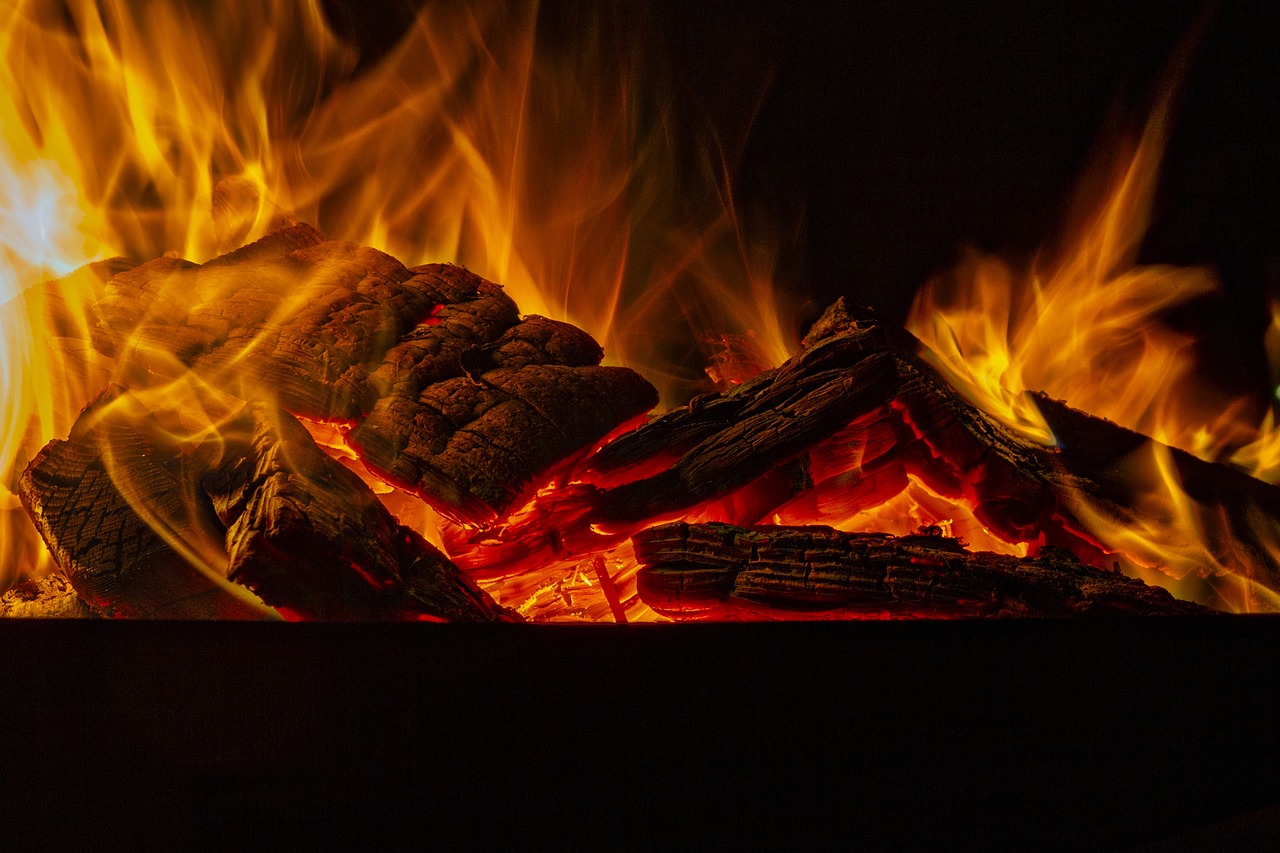
Finding Inspiration and Community
Finding inspiration in wood-burning art can sometimes feel like searching for a needle in a haystack, especially when you're just starting out. But fear not! The world of pyrography is teeming with resources and communities that can ignite your creativity and help you connect with fellow artists. Whether you're looking for new techniques, project ideas, or just a bit of encouragement, there are countless avenues to explore.
One of the best places to start is online. Websites like Pinterest and Instagram are treasure troves of inspiration, showcasing the stunning works of talented wood-burning artists from around the globe. You can scroll through endless feeds of intricate designs, unique styles, and innovative techniques that can spark your imagination. Why not create a mood board of your favorite pieces? This visual collection can serve as a constant source of motivation when you're feeling stuck.
Additionally, joining online communities can significantly enhance your artistic journey. Platforms such as Facebook Groups and Reddit have dedicated spaces for wood-burning enthusiasts where members share their work, tips, and advice. Engaging with these communities allows you to ask questions, receive constructive feedback, and even collaborate on projects. It’s like having a virtual art studio where you can bounce ideas off each other!
If you prefer a more hands-on approach, consider enrolling in local workshops or classes. Many art supply stores and community centers offer wood-burning classes that cater to all skill levels. This not only provides you with direct instruction but also allows you to meet other artists in your area. Imagine the thrill of sharing a workspace with like-minded individuals who are just as passionate about pyrography as you are!
Don’t underestimate the power of social media either. Platforms like Instagram and Facebook are not just for sharing your work; they’re also excellent for discovering new artists and trends. You can follow hashtags like #WoodBurningArt or #Pyrography to see what others are creating and gain fresh ideas for your next project. Plus, interacting with other artists can lead to valuable friendships and mentorship opportunities.
Lastly, if you’re feeling adventurous, consider participating in art fairs or local exhibitions. These events are fantastic for showcasing your work and meeting other artists and art lovers. You can gain feedback on your pieces, learn about different techniques, and even sell your work. The experience is not only rewarding but also helps you build a network within the art community.
In summary, finding inspiration and community in the world of wood-burning art is all about exploring various resources and connecting with others. From online platforms to local workshops, there are endless opportunities to learn, grow, and share your passion for pyrography. So, grab your tools, dive into the creative pool, and don’t hesitate to reach out to the vibrant community waiting to welcome you!
- What is wood-burning art? Wood-burning art, also known as pyrography, is the practice of using a heated tool to create designs on wood surfaces.
- Do I need special tools to get started? Yes, you will need a pyrography pen, wood, and safety equipment. Basic tools can be affordable and are essential for beginners.
- Can I use any type of wood for wood-burning? While you can use various types of wood, softer woods like pine, basswood, and birch are recommended for beginners as they burn more easily.
- How can I improve my wood-burning skills? Practice is key! Experiment with different techniques, seek feedback from others, and don’t hesitate to take classes or workshops.
Frequently Asked Questions
- What is wood-burning art?
Wood-burning art, also known as pyrography, is the practice of decorating wood by burning designs into its surface using a heated tool. This ancient art form allows artists to create intricate designs, textures, and shading, making each piece unique.
- What tools do I need to start wood-burning?
To begin your wood-burning journey, you'll need a pyrography pen, various types of wood, safety equipment like goggles and masks, and optional accessories such as stencils and brushes. These tools will help you create beautiful designs while ensuring your safety.
- Can I use any type of wood for wood-burning?
Not all woods are created equal when it comes to wood-burning. Softwoods like pine are easier to burn and ideal for beginners, while hardwoods like maple and cherry offer more detail and durability. It's essential to choose the right wood for your artistic goals.
- What safety precautions should I take while wood-burning?
Safety is vital in wood-burning. Always work in a well-ventilated area, use protective eyewear, and keep a fire extinguisher nearby. Additionally, avoid wearing loose clothing and be cautious of your workspace to prevent accidents.
- What are some basic techniques for beginners?
Beginners can start with fundamental techniques like shading, line work, and texturing. These skills will help you develop your style and create stunning wood-burned pieces. Practice is key to mastering these techniques!
- How can I incorporate color into my wood-burning projects?
You can enhance your wood-burning art by adding color through stains, paints, or dyes. Each method offers a different look, allowing you to experiment and find the perfect combination that complements your artwork.
- Is it possible to create mixed media art with wood-burning?
Absolutely! Combining wood-burning with other art forms like painting or collage can lead to innovative mixed media pieces. This approach allows for greater creativity and can result in truly unique artworks that stand out.
- Where can I find inspiration for wood-burning art?
Inspiration can be found in many places! Explore online communities, social media platforms, and local workshops. Connecting with fellow artists and sharing ideas can spark new concepts and lead to exciting creative opportunities.



















